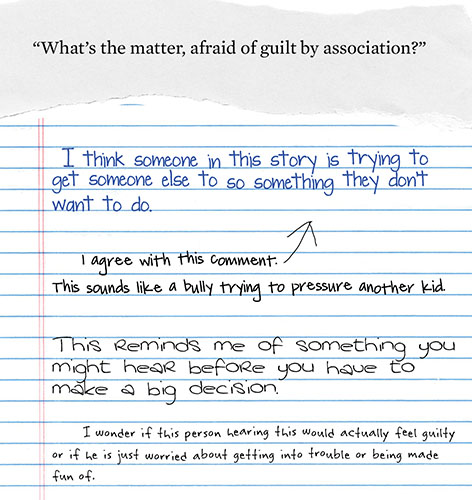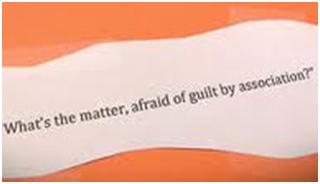What?
When?
Before and after reading
Why?
Text graffiti eases students into intensive study of a full text. Once students begin reading the entire text, they see familiar words and phrases.
How?
- Choose the central text.
- Print and cut out lines from the text. Prepare as many pieces of text as you have students. Tape each text piece to a larger piece of paper; tape the larger piece to student desks. Provide the handout How to Graffiti a Text.
- Instruct students to read and comment on the text at their own desks. Set the purpose for the lesson first to help students focus their writing. Remind students to comment directly on the text in front of them (i.e., not "I think this is sad," but, "I think this is sad because the author uses words like devastation and chaos to describe her homeland.").
- Signal students to move to another desk. Provide enough time for students to read and respond to the text (3-5 minutes). Repeat step three. Use music to mark the transitions, pressing play/pause when it's time to switch seats.
- Remind students to respond to each other's comments (names are optional). Creating this thread makes the transition to group discussion more effective. Depending on class size and the lesson objective, limit the number of quotes students comment on.
- Ask students to return to their seats and read what others have written.
- Have students make predictions about the text (subject, characters, plot, purpose, etc.). Ask them to write their predications on index cards and cite pieces of the text that informed their predictions. Open a class discussion about the most popular predictions. Chart the major points from this discussion.
- After reading the full text, instruct students to confirm or correct their predictions and comments. Confirmations and corrections should focus on textual evidence. Students should cite the text when explaining what it says and how it relates to their original predictions and comments.
To see the Text Graffiti strategy in action, click here.
Connection to anti-bias education
This strategy allows you to set the tone for text-related discussions about challenging, sensitive or controversial topics. Anti-bias education teaches students how to approach difficult issues and discussions. Text graffiti can help start those discussions.
Sample: Text graffiti
  |
